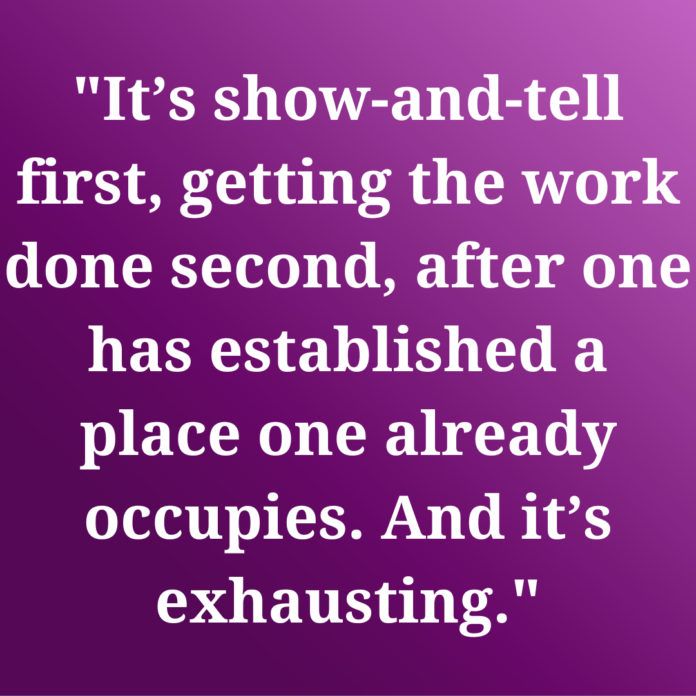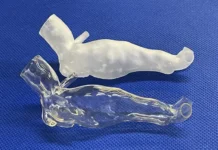By David A. Walker, Executive Chairperson, Photopolymer Additive Manufacturing Alliance (PAMA) and Callie I. Higgins, Ph.D.; Co-Project Leader, Photopolymer Additive Manufacturing; National Institute of Standards and Technology
Additive Manufacturing (AM), despite its size and recent growth, still is a nascent technology at the beginning of its journey into the manufacturing supply chain. What’s exciting about this is that the future of photopolymer AM remains unwritten and it can be a vehicle for great change. While gender balance remains an issue across all STEM disciplines, AM offers one of the best opportunities to break down gender biases in the world of manufacturing. To this end, we asked several women leaders with careers in or using photopolymer AM to share a bit about their journey, views and unique challenges they overcame.
 Michelle Bockman
Michelle Bockman
President
Stanley X
Starting a new job always gives me an opportunity to stop and reflect on where I’ve been and what I’d still like to professionally accomplish. I started my career as a mechanical engineer in the automotive industry. As a male-dominated industry, it presented a unique set of challenges, but I prevailed due to my skillset, curiosity, attitude and work ethic. My first experience with a 3D printer was in an engineering lab at Jeep Truck Engineering. We printed a carrier to complete a tolerance stack on a new product, Model 60 Axle. The innovation and excitement surrounding 3D printing was an experience I’ll never forget, but I couldn’t predict then that I would work continually in 3D printing throughout my career. As my career advanced, I spent many years at both GE and HP in various roles of executive leadership. While in a more “traditional” corporate environment, I got exposure to newly acquired businesses and start-ups and later led a start-up. The male-dominated industry trend continued, and I developed a passion for supporting girls and women in STEM. The risky startup world invigorated me and, looking back, everything in my career has led me to Stanley X – the combination of corporate, start-up and social responsibility. I’ve been able to take my experiences in transformation, start-up, corporate, acquisitions and much more and bring it to Stanley X. I’m only a few months into my journey and look forward to the future where we’re reinventing what’s possible for those who make the world.
 Sarah Goehrke
Sarah Goehrke
Senior Director, Strategic Communications and Ecosystems
Nexa3D
It wasn’t until I was working in additive manufacturing that I was ever the only person who looked like me in a large group. At a well-known company’s hosted event overseas, I decided to say the quiet part out loud. “Well,” I observed, “I suppose I’m our table’s token woman.” The seven gentlemen at my table chuckled quietly and demurred. “It’s not like that,” one assured me without eye contact, even as I again counted one woman each at the six eight-top tables.
As a non-technical person, these events haven’t been rare – but neither have they been my norm. For many of my colleagues, this type of reception, this uncomfortable chuckle and reassuring-if-empty denial, is a fact of every day of their working lives. Women working in quote-unquote unexpected places – as engineers, as executives, as shipping clerks, as technicians, as salespeople – face up every day to this reality. The quiet part often stays quiet.
The onus, then, remains on the individual to prove she belongs; that is the underpinning of the “unexpected”: Show that you belong. Show that you are the expert. It’s show-and-tell first, getting the work done second, after one has established a place one already occupies. And it’s exhausting.
 Alex Kingsbury
Alex Kingsbury
Additive Manufacturing Industry Fellow
RMIT University
I always say that I’m a proud engineer, and it’s true! Engineering is such a noble profession, and engineers have been responsible for so much of the wonderful, awe-inspiring inventions and accomplishments in this world. I don’t know that I’m the next Alexander Bell or Nikola Tesla, but I’m definitely proud to belong to a group of such significant people and do hope that in my small way I can leave my mark on the world.
But in truth, there are other reasons why I’m so proud to be an engineer, and that’s because I did my engineering degree while raising a child, and I did it all by myself. It was hard work, or ‘hard yakka’ as we say in Australia! Every day, I was up at 5 a.m. to get us organized for the day. You see, I had to catch the 7 a.m. train to avoid peak hour with a pram. Then, off to classes and home in time to cook us both dinner and then early bed for the little one so that I could get back into my study before my eyes started rolling into the back of my head and I had no choice but to get some rest. While my peers were out enjoying the freedoms of youth, I was at home reading books to my little girl or giving her a bath – and studying in the spare moments I could grab.
While parenting isn’t the domain of women alone, more often than not primary caring largely falls to women, and it remains that way to this day. I don’t begrudge a single minute I spent with my little one, but I entered the workforce facing the motherhood penalty from Day 1, being known as “the Mum” who may not want that stretch assignment and whose priorities seemingly lay elsewhere. That’s why I identify as a proud engineer, because as much as I am an extremely proud mother, and I feel that deeply every day, I need the world to know that I’m also very proud of myself for becoming the engineer that I am today.
 Cindy Deekitwong
Cindy Deekitwong
Global Head of Marketing and Customer Experience, Business Accelerator
Henkel Adhesive Technologies
Women, including me, who hold technology positions perceive more gender inequality than women who hold non-technical positions. We need to work harder and speak louder to get on “the seat” we deserve. But this is starting to change! While unconscious gender bias can’t necessarily be “fixed,” the mindset of “building” comes to play.
There are pragmatic, actionable steps that we in the tech industry can use to foster change. One way is to help women techies feel less singled-out about their family life.
Build a more inclusive climate. Talk about your, ours own! Beat down the stereotype by opening up about our life, partner, children. This will give the whole team an opportunity to relate to one another. In addition, male allies play a critical role in driving change. We need more sponsorship.
Inclusiveness is critical. Now is the time to drive diversity beyond just slogan. Through a collaborative approach, where all voices are heard, we can build, design and innovate at a higher level. We become #StrongerTogether.







